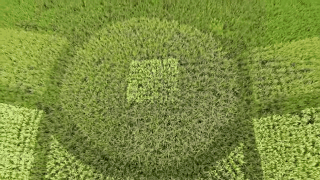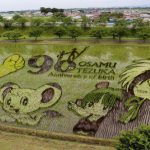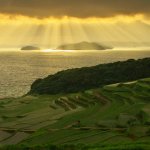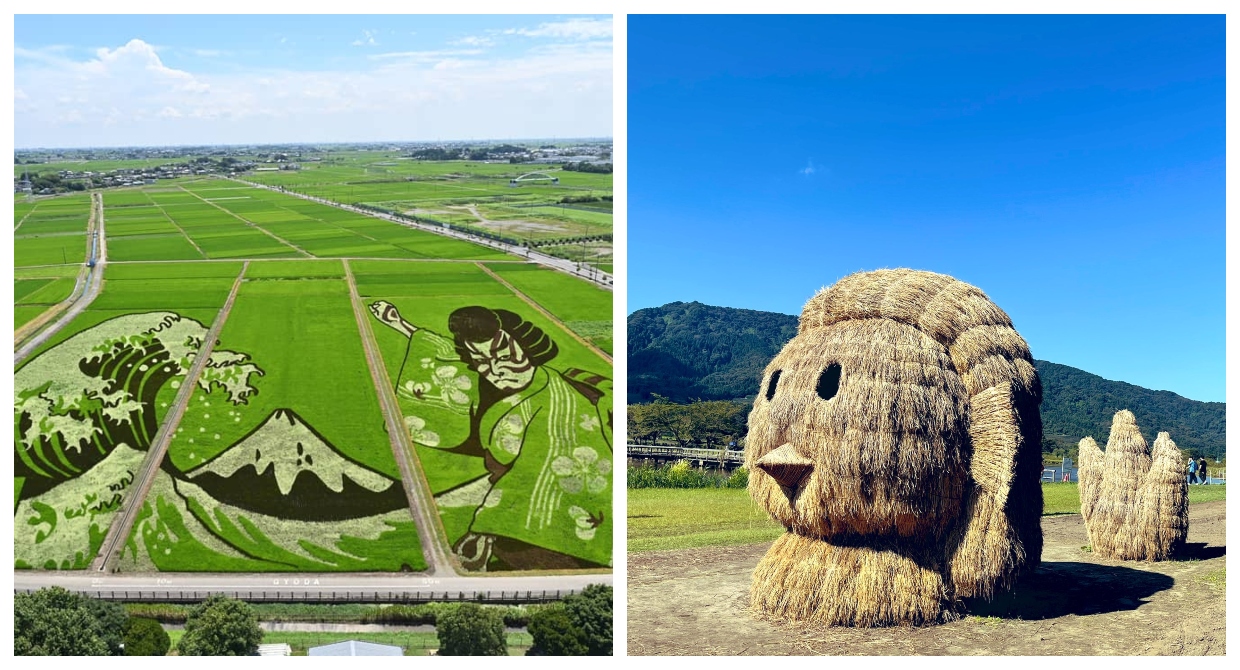
If you haven’t heard, rice is kind of a big deal in Japan. And around this time of year—harvest season—the grain is front and center on the entire nation’s mind. In fact, according to Japan’s ancient calendar of 72 microseasons (which Spoon & Tamago members receive in their inbox), September 2 – 6 was “Rice Begins to Ripen.”
There are if course traditional ceremonies dating back hundreds of years that pray for bountiful harvests. But more recently, Japan’s national staple has inspired rice farmers to get creative with their grain.
Gyoda Rice Paddy Art (Saitama prefecture)
If it’s size that matters to you, head to the Gyoda rice paddies of Saitama prefecture, which were recognized by the Guinness Book of World Records in 2015 as having the world’s largest rice field art. Since 2008, the farmers here have been planting different varieties of rice according to blueprints. During July the different colored rice grows, slowly filling out and completing the work of art, which is usually unveiled in mid-August.
This year in Gyoda, Mount Fuji with large waves by Edo period artist Katsushika Hokusai and a powerful kabuki actor are dynamically displayed. This work is expressed using perspective, and if you look at it from the ground, you’ll only see an ordinary rice paddy. The artwork reveals itself only from the 50-meter high observatory of the Ancient Lotus Hall in the city’s Ancient Lotus Village park. The best time to see it is in September but it can be enjoyed until it is harvested in October. Here is the exact location.

photos courtesy Gyoda City Tourism Association
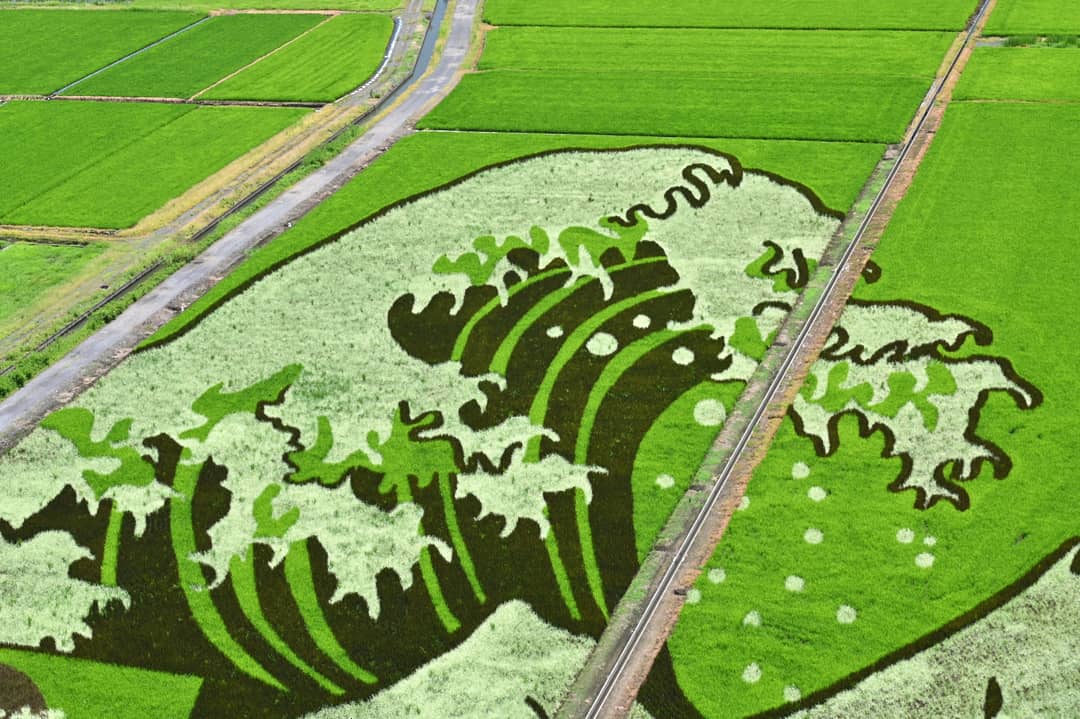
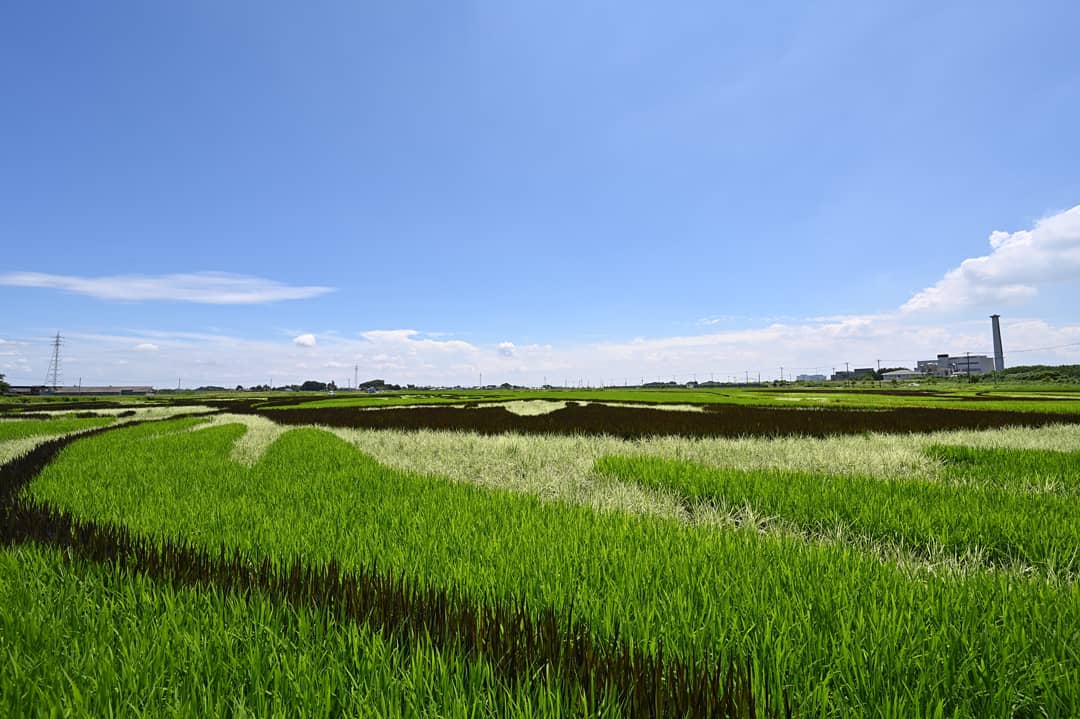
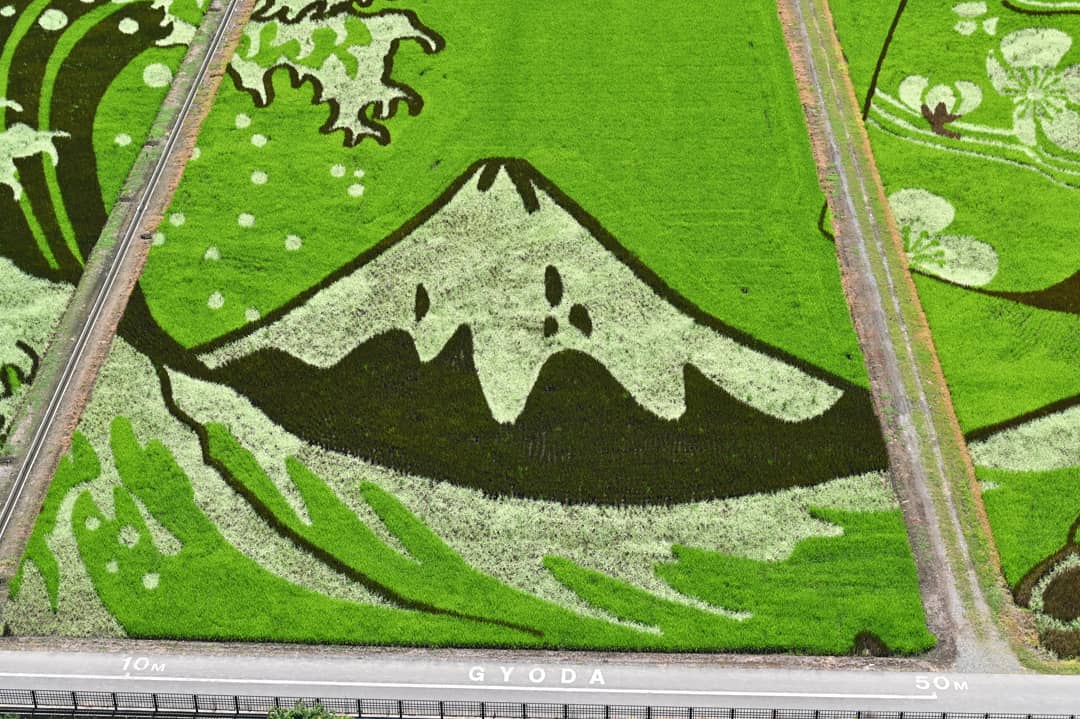
Wara Art Festival (Niigata prefecture)
One of our favorites, and one we’ve chronicled for quite some time, is the Wara Art Festival in Niigata. Highly interactive and great for kids, the abundant amount of leftover rice straw (wara, in Japanese) is transformed into gigantic beasts with the help of art students from Tokyo. The Wara Art Festival all started in 2006 when the local district reached out to Musashino Art University to seek guidance on transforming their abundant amount of rice straw into art. And in 2008, the very first Wara Art Festival was held. Since then, every year the school sends art students up to Niigata to assist in creating sculptures made out of rice straw.
This year, unsurprisingly, the festival features the mythical plague-fighting yokai Amabie. Also on view is the triangular good luck talisman sankaku daruma and the mythological phoenix, a symbol of good health and better know to Pokemon fans as Ho-Oh. The sculptures are on view till the end of October. Here is the exact location.
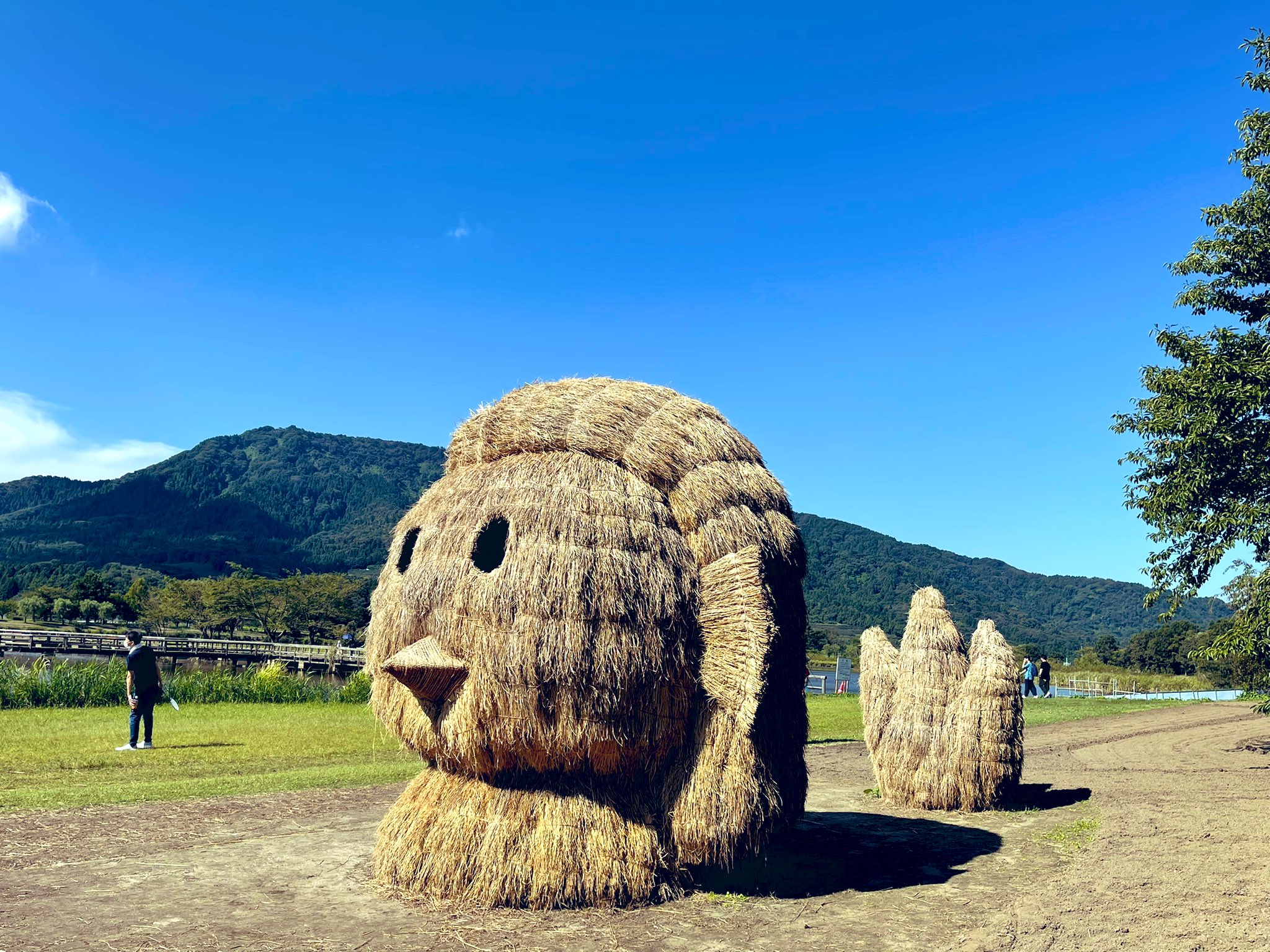
photos courtesy miwa
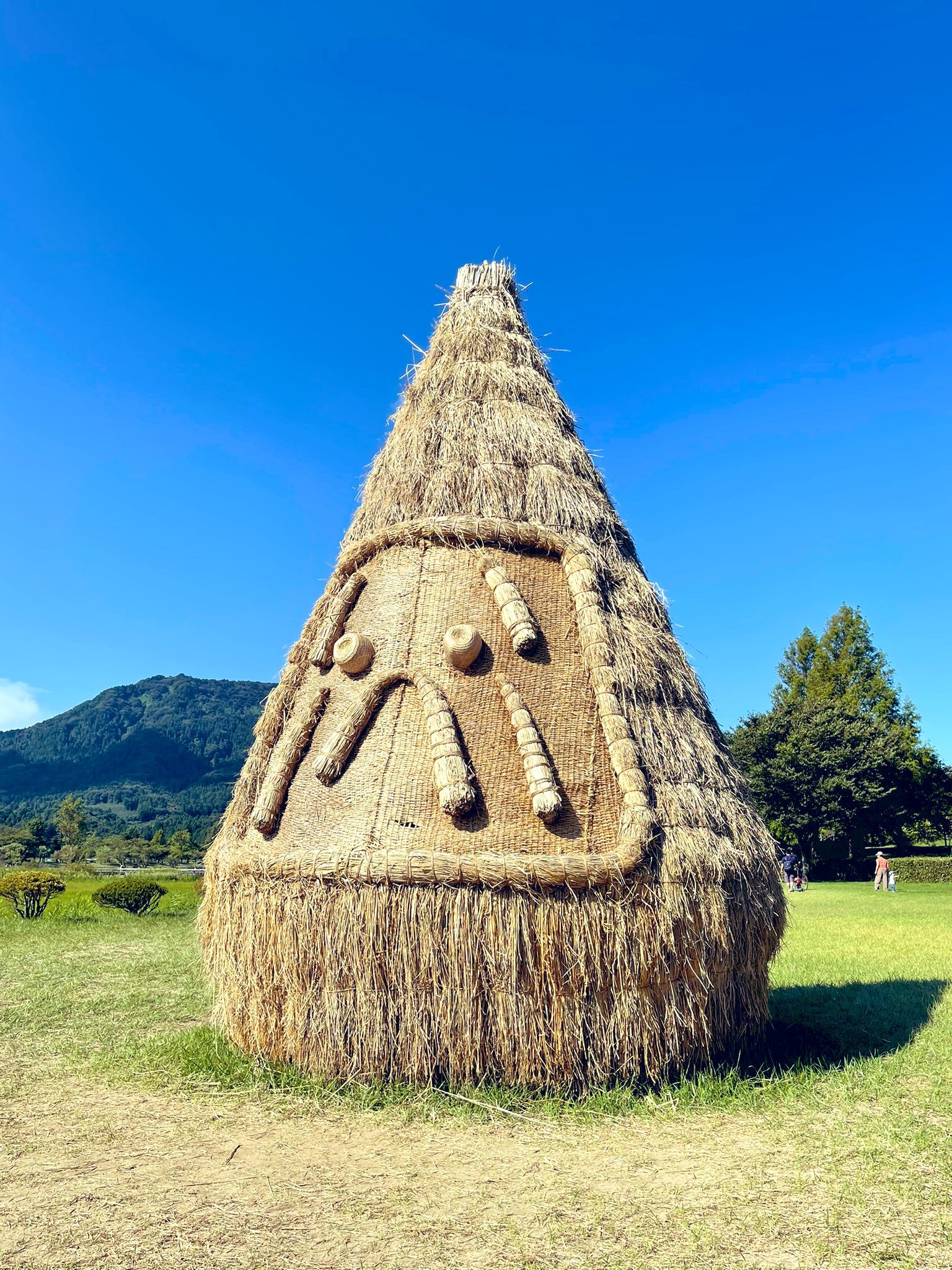
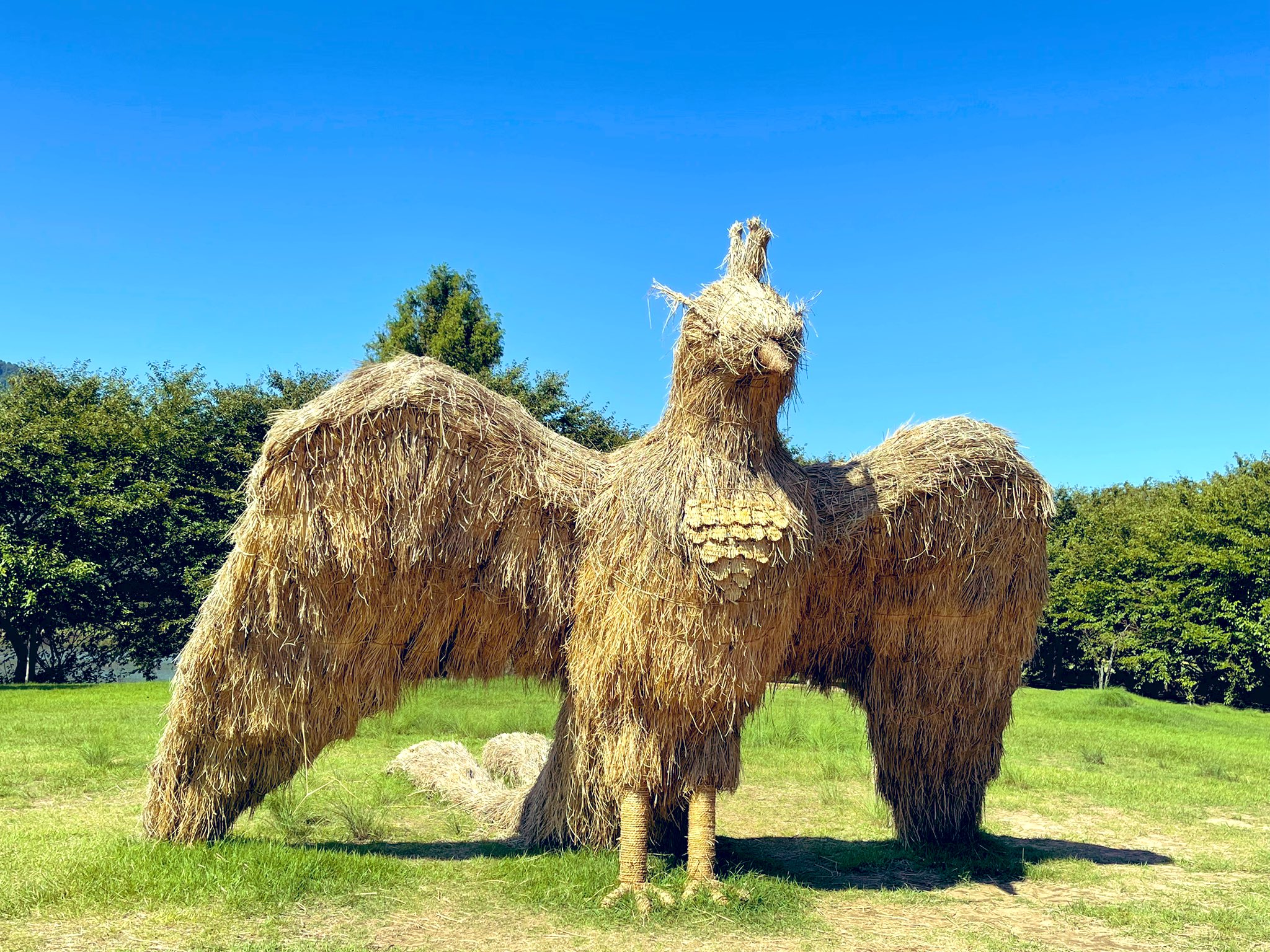
Takachiho Rice Paddy Art (Miyazaki prefecture)
Last but not least, the Takachiho rice paddy art featuring every Japanese kid’s favorite villain baikinman (“germ man”). His trademark slogan bai bai kin written alongside is a reference to saying goodbye to Covid-19.
The Tochimata rice terrace is one of the “top 100 rice terraces in Japan” and is beautiful to visit any time of the year. The rice paddy art, an initiative launched in 2011 to cheer on those affected by the Tohoku earthquake and tsunami, can be viewed through September 20th. Exact location here.
